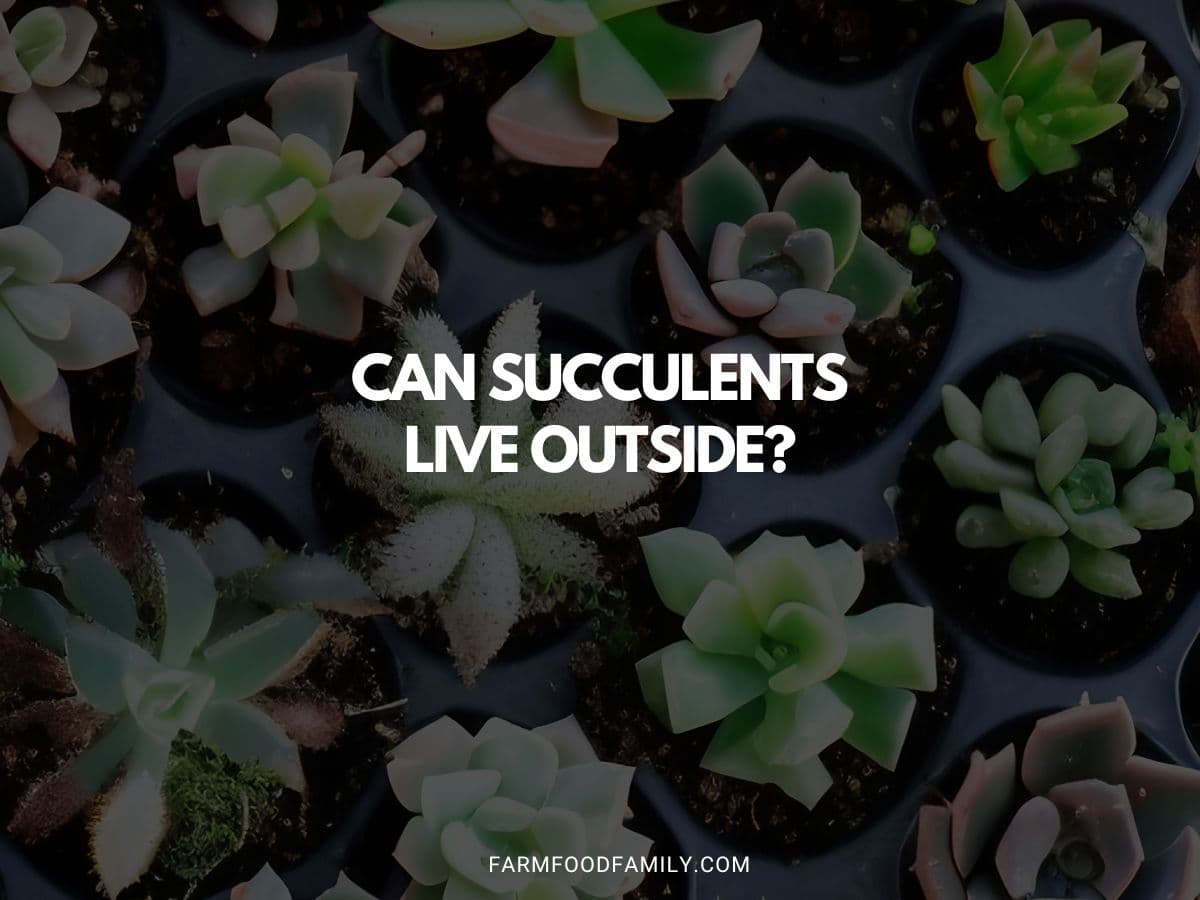Succulents are any plants that have fleshy, water-storing leaves or stems. They usually have thick skin and can store moisture for long periods of time in order to survive drought conditions.
Succulents are native to areas with dry climates such as deserts and grasslands and they come in a variety of shapes, sizes, and colors. Popular types of succulents include Echeveria, Aloe, Sedum, Sempervivum, and Crassula.
Can Succulents Live Outside?
The answer is yes! Succulents are incredibly resilient and can survive in a variety of climates. Many succulents, such as cacti, aloe and some agave varieties, are native to deserts or arid regions and have evolved to thrive in hot and dry conditions.
Other types of succulents, like sedums and echeveria, naturally grow in more temperate areas. These plants can survive temperatures as low as 22-27°F (-6 to -3°C).
Sun Exposure and Water Requirements
Succulents need to be in full sun for optimal growth. The amount of sunlight they receive determines the shape and size of their leaves.
If the leaves of a succulent are small and round, it means that the plant is not receiving enough light. On the other hand, if it has large and flat leaves, then the plant is getting too much sunlight.
In addition to sun exposure, succulents need very little water in order to thrive. They store moisture in their fleshy leaves, so they can survive long periods of drought. However, they should not be overwatered as this will cause them to rot and die.
Conditions for Outdoor Thriving

When planting succulents outdoors, it is important to consider the climate and soil type. Succulents prefer warm temperatures and low humidity.
The soil should be well-draining and porous, as succulents need good drainage in order to prevent root rot.
Adding amendments such as compost or sand can improve the drainage and aeration of the soil. It is also important to provide proper drainage by planting in containers or raised beds so that excess water can drain away from the roots.
Challenges and Risks of Outdoor Cultivation
One of the biggest challenges of outdoor succulent cultivation is pests. Common types of pests that affect succulents include mealybugs, aphids, and scale insects. These can be prevented by regularly inspecting plants for signs of infestation and taking measures such as spraying with insecticidal soap.
In addition to pests, succulents can be damaged by excessive rain or cold. If you live in a colder climate, it is important to provide shelter for your succulents during the winter months.
Overwintering strategies include mulching and covering with a plastic sheet or cloche. You should also bring them indoors if there is a risk of frost or extended periods of cold weather.
Tips and Tricks for Successful Outdoor Succulent Care
When it comes to successful outdoor succulent care, the key is to choose the right location for your plants. Make sure that they get enough sunlight and provide good drainage. You should also water them deeply, but infrequently.
Fertilization is not necessary for most succulents, but if you find that your plants are looking a bit pale or weak, then a mild fertilizer can help.
When it comes to overwintering in colder climates, mulching and covering with a plastic sheet or cloche are good strategies. If you plan to propagate and transplant your succulents, then it is important to wait until the weather warms up in spring before doing so.
Utilization Considerations
In order to properly care for succulents outdoors, gardeners should consider their climate and soil type. Succulents prefer warmer temperatures and well-draining, porous soil.
They also need to be in full sun for optimal growth and should not be overwatered as this can cause them to rot. In colder climates, gardeners should provide winter protection by mulching and covering with a plastic sheet or cloche.
Finally, pests can be prevented by regularly inspecting plants and taking measures such as spraying with insecticidal soap. With the right care, succulents can thrive in an outdoor garden.
Frequently Asked Questions
Can all types of succulents live outside?
While many varieties can thrive outdoors, some are more sensitive to extreme temperatures or moisture and may require special care or protection to ensure their survival.
How often should I water my outdoor succulents?
The ideal watering frequency will depend on the specific species of succulent and your local climate. In general, outdoor succulents need less frequent watering than indoor plants, as natural rainfall and humidity can provide some of their moisture needs.
Do outdoor succulents need special soil?
Succulents require well-draining, porous soil to minimize the risk of root rot. It may be useful to amend garden soil with materials like perlite, sand, or pumice to increase drainage and aeration.
How can I protect my outdoor succulents during extreme weather?
Protective measures can include moving potted succulents under shelter, using row covers or cold frames during icy weather, or placing a tarp over in-ground plants to shield them from heavy rainfalls. Pay close attention to weather forecasts and individual plant needs to ensure the best chance of survival.

